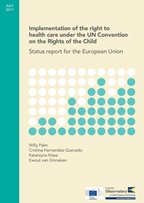
Coverage and access
Health coverage is multi-dimensional, involving: who is eligible to access health services, what is available in the benefits package, how much cost-sharing is required and what other barriers impede access to needed care?
- Population coverage: the share of the resident population that is eligible to access publicly funded health services;
- Scope of coverage: the package of publicly financed benefits (either explicitly listed or based on established precedent) to which those eligible for health care are entitled;
- Breadth of coverage: the out-of-pocket costs people pay, through co-payments or user charges, for services that are not included in the public benefits package or which are only partly reimbursed.
- limited out-of-hours services or lack of appointment booking tools;
- having to travel distances to reach services, particularly in rural or remote areas;
- waiting times to see specialists or have a hospital procedure;
- shortages of health care workers, particularly doctors or nurses, to staff facilities and provide services; and
- the availability of affordable medicines and medical aids.
Universal Health Coverage
Financing and payment topics
Related publications
Oral diseases are increasingly recognized as one of the most prevalent conditions in Europe, affecting nearly half of the European population. Despite...
Ensuring access to medicines: how to redesign pricing, reimbursement and procurement?
This policy brief is one of a series on addressing market and policy failures in the pharmaceutical sector that was prepared for the Austrian EU Presidency....
Access to care
Access to the health care services that a person needs is one of the cornerstones of universal coverage. This is particularly important for vulnerable...

Implementation of the right to health care under the UN Convention on the Rights of the Child
Article 24 of the UN Convention on the rights of the child (UNCRC),which was adopted in 1989, establishes a fundamental right for every child to access...
Subscribe to our newsletter
Sign Up